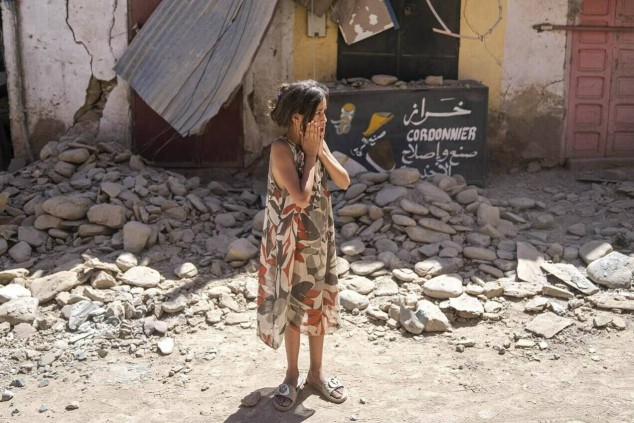Deprecated: Creation of dynamic property ET_Builder_Module_Comments::$et_pb_unique_comments_module_class is deprecated in /home4/readynow/public_html/wp-content/themes/Divi/includes/builder/class-et-builder-element.php on line 1425
Record-Setting Disasters
6 Reasons why record-setting disasters are happening now
Most recently, at least 2,600 were killed in a rare, powerful Moroccan quake, the most powerful in 120 years. At least 2,000 people died in Libya with 10,000 believed missing after heavy rains destroyed two dams, sweeping entire neighborhoods into the sea.
“As a global community, it is imperative that we act quickly and together to confront this crisis. And this will require innovation and collaboration around the world. It will require the use of renewable energy and new technologies. And it will give each of our nations the opportunity to build healthier communities and stronger economies.”
—Kamala Harris, Leaders Summit on Climate, 2021
While it’s essential to be cautious when making claims about trends, there is evidence to suggest that certain types of disasters have been on the rise, or at least their impacts have been more significant in recent decades. Here are some key factors contributing to these record events and their increasing costs:
1. Climate Change: One of the most significant contributors to the increase in global disasters is climate change. Rising global temperatures have led to more frequent and severe weather events, such as hurricanes, droughts, wildfires, and heavy rainfall, all of which can result in significant damage and loss of life.
2. Urbanization: The world’s population is increasingly concentrated in urban areas, which are often more vulnerable to disasters. Rapid urbanization can lead to poor planning, inadequate infrastructure, and higher population density, making cities more susceptible to the impacts of disasters.
3. Deforestation: The destruction of forests, especially in regions prone to natural disasters like floods and landslides, can exacerbate the impacts of these events. Trees play a crucial role in stabilizing soil and regulating water flow, so their removal can lead to increased disaster risks.
4. Environmental Degradation: Pollution, habitat destruction, and the over-exploitation of natural resources can contribute to environmental degradation, making ecosystems less resilient to disasters.
5. Increased Connectivity (or a lack of): In the age of globalization and increased connectivity, disasters can have far-reaching and more immediate impacts. The spread of information and the movement of goods and people can both help and hinder disaster response and recovery efforts.
6. Human Activities: Certain human activities, such as mining, deforestation, and improper land use, can contribute to disasters like landslides, dam failures, and industrial accidents.
Disasters are increasing globally. However, because of improved risk reduction efforts, such as improved early warning systems and better disaster preparedness, we are saving more lives despite record-setting disasters. But we need to keep pushing for more robust global resiliency.


0 Comments